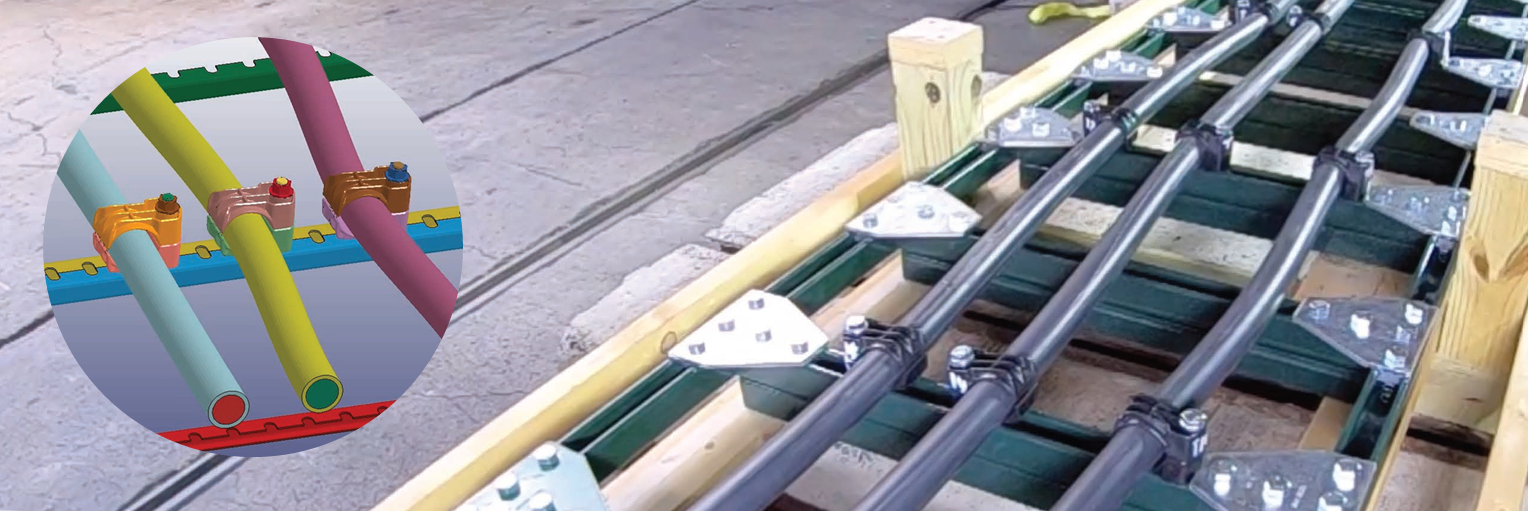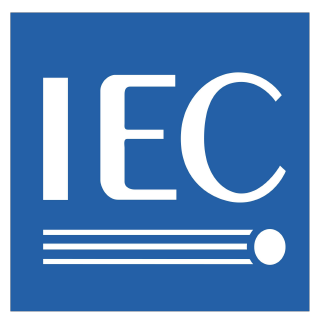— Published on 17 Apr 2025

A short circuit fault that occurs in the blink of an eye can cause damage that lasts hours, weeks, or even a lifetime. In a data center, for example, a short circuit fault can send energized cables whipping around racks of servers that could take months to replace. And in a factory, the same scenario could lead to fires, employee injuries, and even death.
Cable cleats minimize those risks by restraining one or more cables against axial, lateral, and torsional forces. They’re ideal for ensuring that installations comply with IEC 61914 — Cable Cleats for Electrical Installations, which requires single conductors to be securely bound in circuit groups.

Cable cleats ensure that cables remain contained in the event of a short circuit fault to minimize disruption and damage to people and property. They utilize stainless steel strapping with heads or buckles, hinged designs, flameresistant polymers, aluminum, locking nuts, and corrosion resistant hardware to fix cables onto trays and other surfaces far more securely than alternatives such as cable ties and conduit clamps. Cable cleats are available to support a variety of configurations, such as single/multicore, trefoil, and quadrafoil.
Cable cleats are ideal for any installation where highpower cables are located near people, equipment, or both. The voltage level is irrelevant. In fact, quite often the highest fault levels can be seen in low-voltage installations. Common examples include data centers, utility tunnels and vaults, refineries, power plants, factory floors, and rail infrastructure. Cable cleats help businesses to minimize downtime and ensure safe workplace for electrical contractors.
IEC 61914:2021 is the latest, most comprehensive, and globally accepted cable cleat design and testing standard. Initially published in 2009, this standard covers key requirements such as resistance to impact, corrosion, and UV, as well as temperature rating, axial load, and more. In the process, IEC 61914 helps electrical contractors and other professionals make an informed, apples-to-apples comparison between different vendors’ cable cleat products.
 Since 2019, Panduit has been a member of the IEC committee responsible for overseeing the IEC 61914 standard. This role ensures that Panduit and its customers remain ahead of the curve, including the products designed to meet the latest standards requirements. Customers also benefit from Panduit’s expertise with stainless steel strap cleats. Panduit specialists have had experience with the IEC cable cleat standard since its inception in 2009 and, before that, with the BS 50368:2003 standard.
Since 2019, Panduit has been a member of the IEC committee responsible for overseeing the IEC 61914 standard. This role ensures that Panduit and its customers remain ahead of the curve, including the products designed to meet the latest standards requirements. Customers also benefit from Panduit’s expertise with stainless steel strap cleats. Panduit specialists have had experience with the IEC cable cleat standard since its inception in 2009 and, before that, with the BS 50368:2003 standard.
IEC 61914 Standard specifies how to protect against excessive cable movement in the event of a short circuit. It includes the testing methodology and process to ensure cable cleat reliability. The IEC 61914 Standard ensures Cable Cleats can withstand and provide real protection during a short circuit fault event. Unlike standard mechanical clamps, which are designed for cable positioning and bundling, IEC 61914-compliant cleats provide essential mechanical protection during such events.
You can reach out to Panduit Team for the technical advise. Alternatively, the Panduit Cleat kAlculator app for web-browsers, smartphones, and tablets makes it fast and easy to identify the right type of cable cleat and determine the correct amount of spacing for installation. Simply select the cable layout and then enter the peak short circuit current and cable diameter. The app will provide part recommendations, as well as the cleat spacing necessary to comply with IEC 61914 standards.
| IEC 61914-compliant Cable Cleats | Non-compliant Cable Cleats |
|---|---|
| Mechanical protection from short circuit fault | Measured using loop tensile tests |
| Validated through short circuit tests | Measured using loop tensile tests |
| Compliant to IEC 61914 Cleat Testing Criteria and Short Circuit Test (0.1 sec duration) | Do not conform to cable cleat design criteria and parameters |
| Short Circuit Test: focused on cable restraint from the destructive electromechanical force at peak level, followed by a short-term decaying RMS. The 0.1 sec duration equates to about five complete force cycles; this duration is enough to determine the true strength of the cable cleat. | Do not have IEC Short Circuit Testing. Note: In some instances, clamp manufacturers will insert a 1sec or 3sec "Short Circuit Current and its Duration" Test. These are quote from a cable specification that concerns with cable degradation as a result of temperature rise (thermal stress heating); it does not concern with cable retention from electromechanical forces. |
Large Paragraph Text Used As A Subheading
Pellentesque non magna eget ex lobortis finibus. Lorem ipsum dolor sit amet, consectetur adipiscing elit. Etiam nec arcu non eros hendrerit viverra a vitae libero. Etiam et ultricies nulla. Donec euismod lectus magna, eu dignissim mauris hendrerit vulputate.
| Time | Place | Details |
|---|---|---|
| 10:00 am - 10:55 am | Expo Hall | Meet and greet in the lobby outside the Expo Hall before the General Assembly. |
| 11:00 am - 11:55 am | Rm 314 | Expert Track: TOP 10 WAYS TO MAKE A DIFFERENCE IN THE INDUSTRY | John Dough, CFO Marketizingly |
| 11:00 am - 11:55 am | Rm 159 | Social Track: MODERN NETWORKING | Hosted by: SponsorName |
Pellentesque non magna eget ex lobortis finibus. Lorem ipsum dolor sit amet, consectetur adipiscing elit. Etiam nec arcu non eros hendrerit viverra a vitae libero. Etiam et ultricies nulla. Donec euismod lectus magna, eu dignissim mauris hendrerit vulputate.